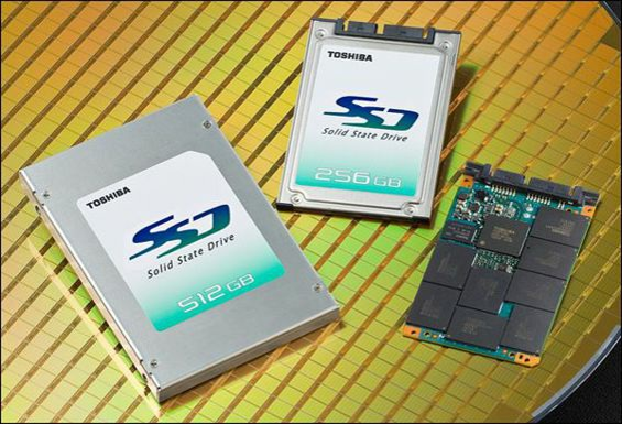Hardware Reference
In-Depth Information
Many systems now strike a balance between the higher performance of SSDs and the greater capacity
of conventional hard disk drives by using both technologies. Many Ultrabooks use a small SSD
(32GB is a typical size) for the operating system and a conventional or hybrid SATA hard disk for
applications and system storage. Many high-performance desktop systems also use an SSD from
128GB to 512GB as a system drive, and a traditional hard disk for additional storage.
Note
A hybrid SATA hard disk includes a small amount of flash memory used to cache most-
Virtually all modern SSDs use the SATA (Serial ATA) interface to connect to the PC and appear just
like a standard hard disk to the system. Both 2.5-inch and 1.8-inch SSDs are shown in
Figure 10.1
.
Some high-performance SSDs come in a card-based form factor, usually designed for PCI Express
slots.
Figure 10.1. 2.5-inch and 1.8-inch solid-state drives (SSDs).
SLC Versus MLC
As previously mentioned, SSDs use NAND flash technology. Two subtypes of this technology are
used in commercially available SSDs: SLC (single-level cell) and MLC (multilevel cell). SLC flash
stores 1 bit in a single cell, whereas MLC stores 2 or more bits in a single cell. MLC doubles (or
more) the density, and consequently lowers the cost, but this comes at a penalty in performance and
usable life. SSDs are available using either technology, with SLC versions offering higher
performance, lower capacity, and higher cost. Most mainstream SSDs use MLC technology, whereas
more specialized high-end products (mostly for server or workstation systems) use SLC.
One major problem with flash memory is that it wears out. SLC flash cells are normally rated for
100,000 Write/Erase (W/E) cycles, whereas MLC flash cells are normally rated for only 10,000 W/E
cycles. When used to replace a standard hard drive, this becomes a problem because certain areas of






